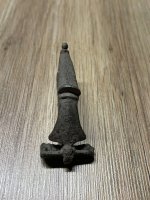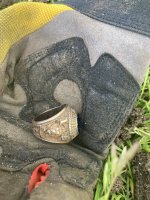cptbild
Sr. Member
I guess that everyone knows that out in the Southwest due to the Sp/Mexican influence,
Words are spelled one way and prononced another way!
As it is in most countries!
In The SW ....
Words with "LL" are pronounced , w/o The "LL" portion of the word ..
It's silent !
As The "LLano River" in Texas .. it's pronounced, "Ano"
OR!
"The Caballo Mnts" in New Mexico " "ka by oo" or, "ka vie oo"
Js & Gs are prononced with an "H" sound
The Az. Town of "AJO" for instance:
Is prononuced "ah ho", NOT! "AH JOE" !
Or
The Gila Monster (a large poisonous lizard) Is, "He La", not, "Gee la" !
What the early TH'er writers did , was to spell the Name of this Famous Mine/mission
Like it sounded !
Tay O pah
Not as it is written.....
OR!
AS it is Pronouced by the Native speaking peoples!
 Teopa
Teopa 
Break out your Mexico Topographic Maps and you'll find the Word ...
One is a modern Day Peak, one is a Spanish mission etc....
Words are spelled one way and prononced another way!
As it is in most countries!
In The SW ....
Words with "LL" are pronounced , w/o The "LL" portion of the word ..
It's silent !
As The "LLano River" in Texas .. it's pronounced, "Ano"
OR!
"The Caballo Mnts" in New Mexico " "ka by oo" or, "ka vie oo"
Js & Gs are prononced with an "H" sound
The Az. Town of "AJO" for instance:
Is prononuced "ah ho", NOT! "AH JOE" !
Or
The Gila Monster (a large poisonous lizard) Is, "He La", not, "Gee la" !
What the early TH'er writers did , was to spell the Name of this Famous Mine/mission
Like it sounded !
Tay O pah
Not as it is written.....
OR!
AS it is Pronouced by the Native speaking peoples!
 Teopa
Teopa 
Break out your Mexico Topographic Maps and you'll find the Word ...
One is a modern Day Peak, one is a Spanish mission etc....





 )
)



